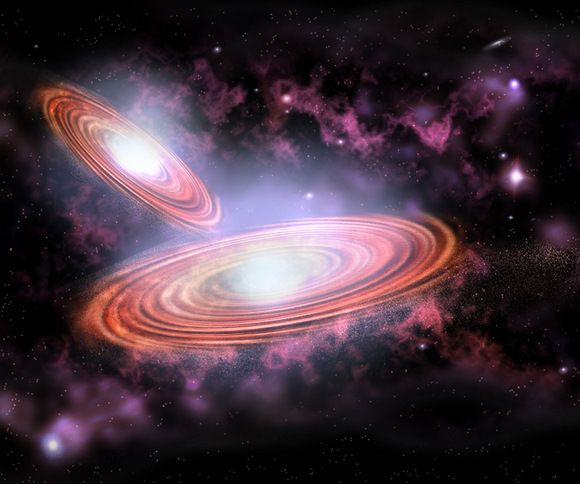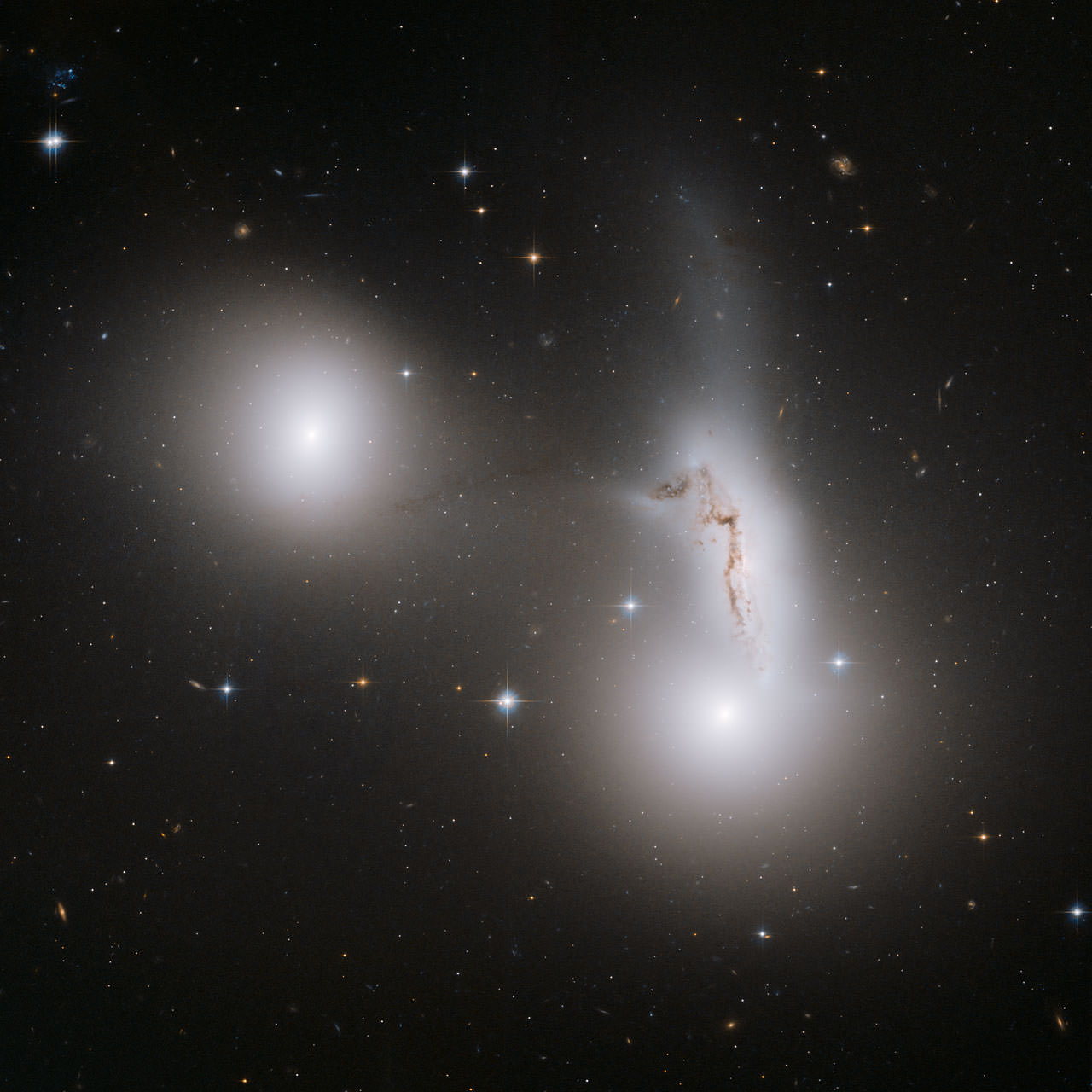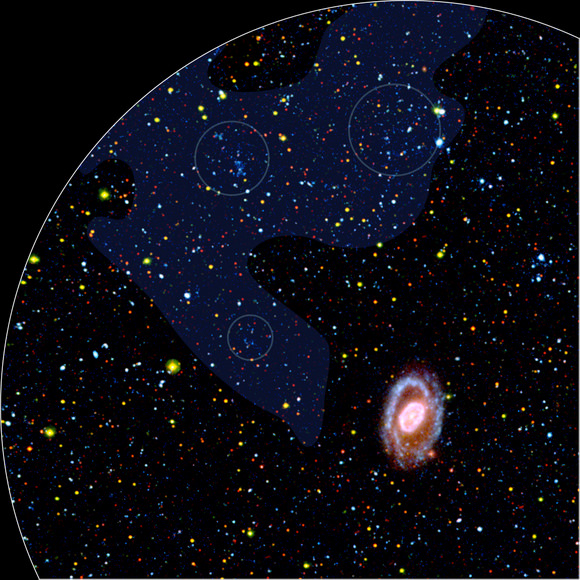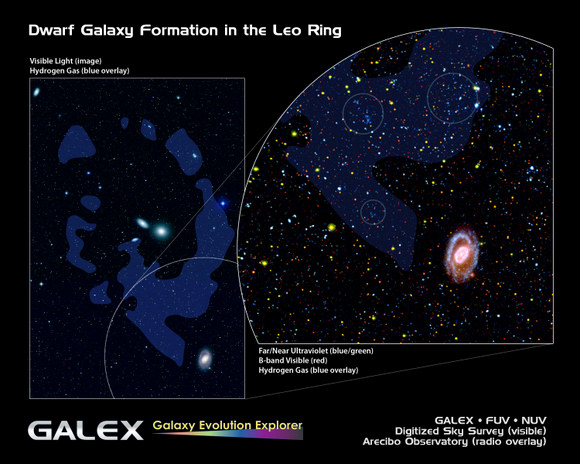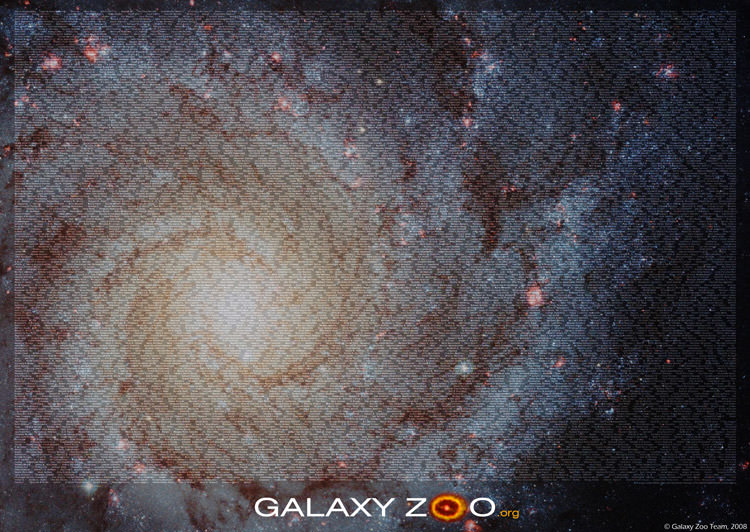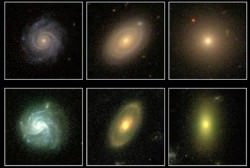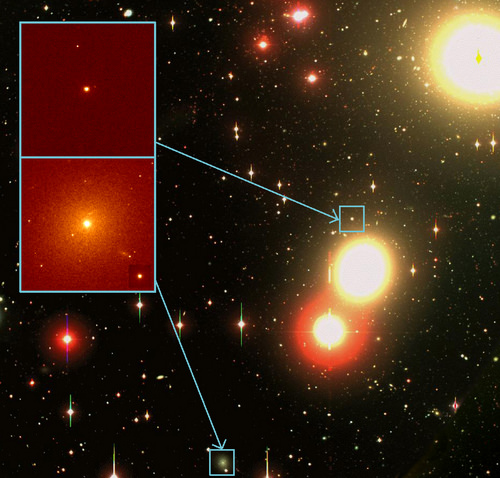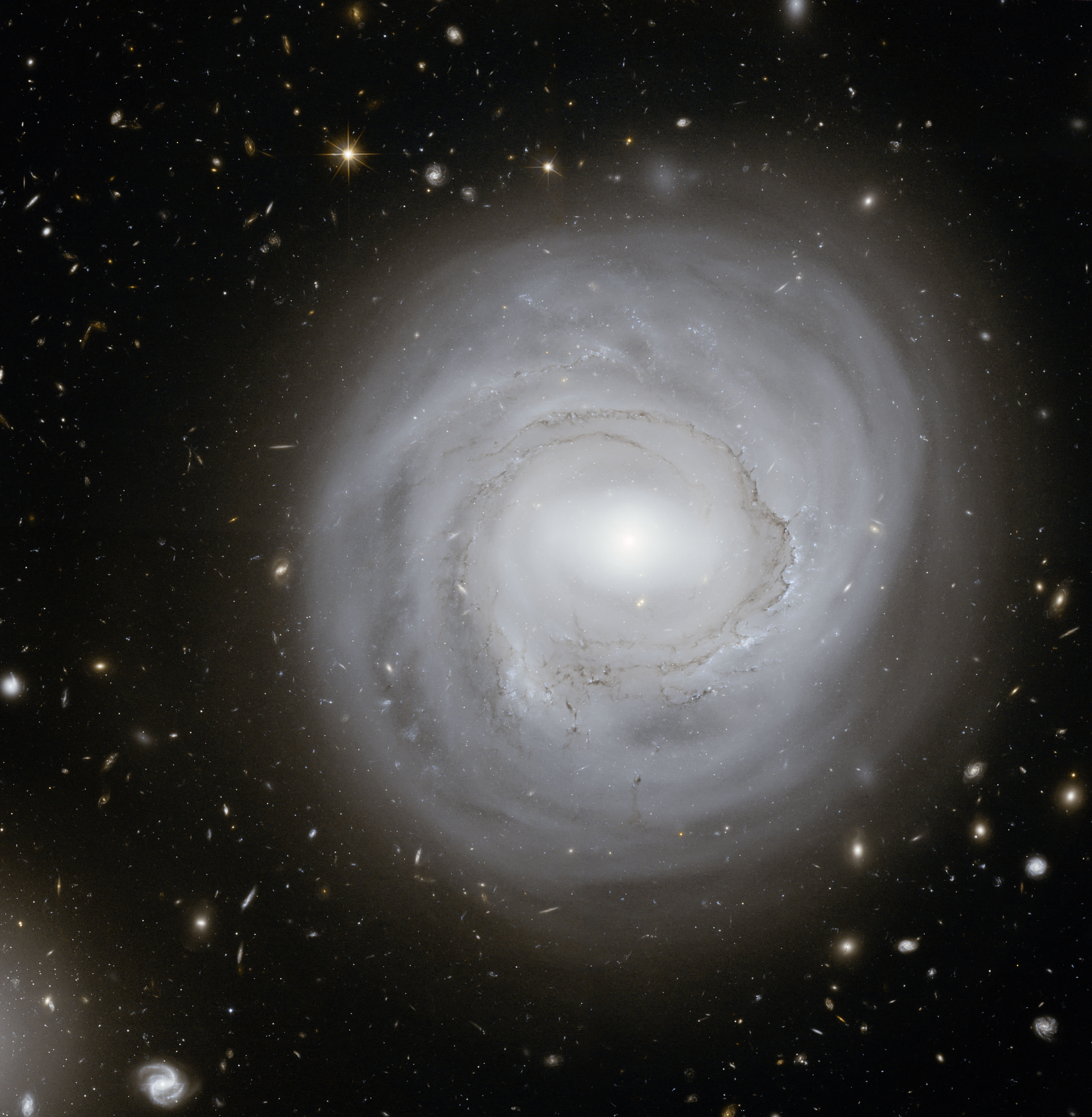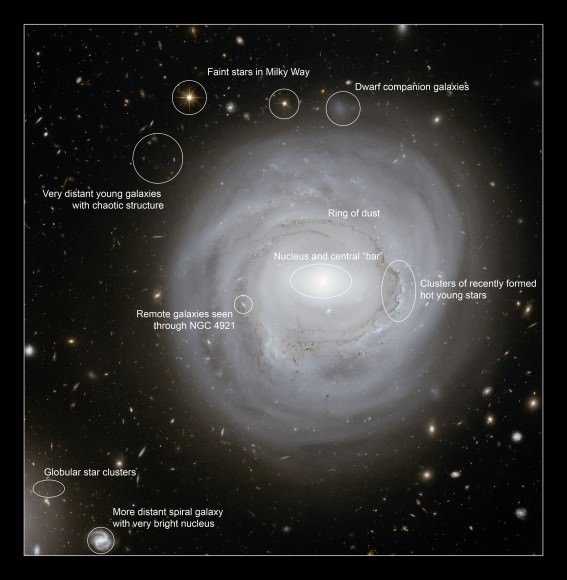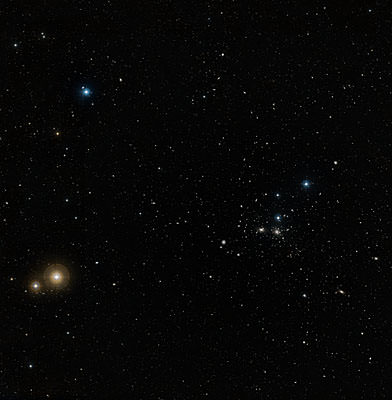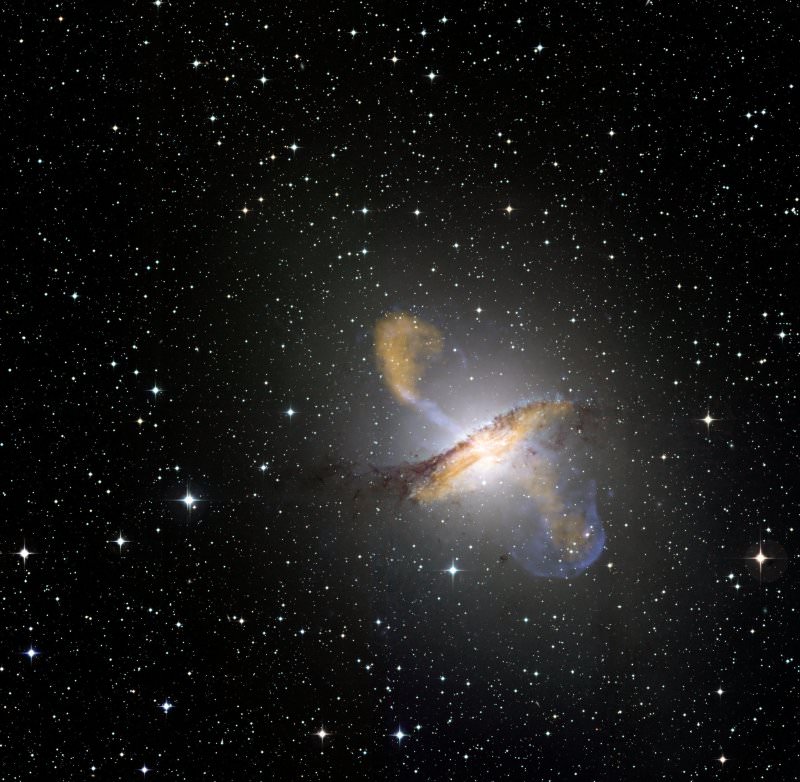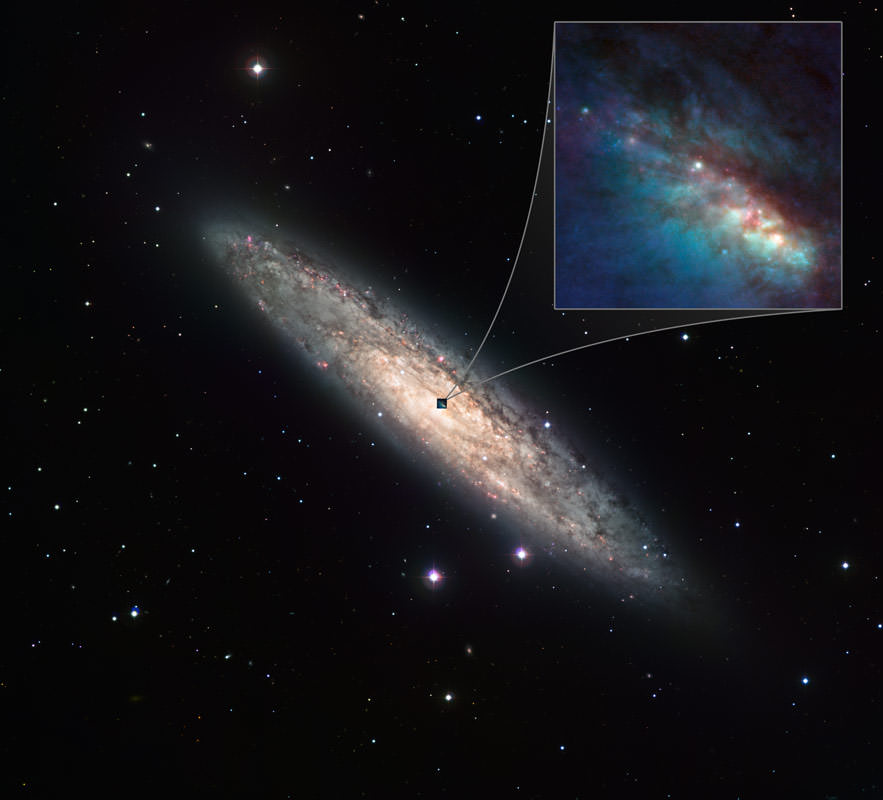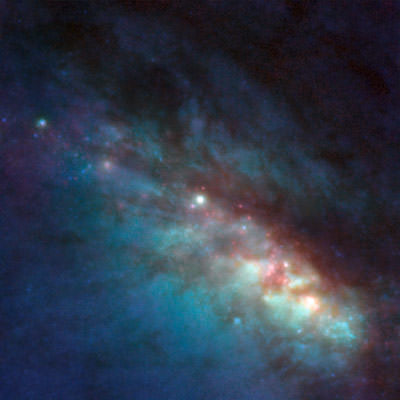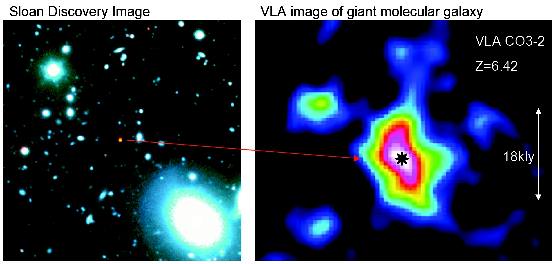Paired black holes are theorized to be common, but have escaped detection — until now.
Astronomers Todd Boroson and Tod Lauer, from the National Optical Astronomy Observatory (NOAO) in Tucson, Arizona, have found what looks like two massive black holes orbiting each other in the center of one galaxy. Their discovery appears in this week’s issue of Nature.
Astronomers have long suspected that most large galaxies harbor black holes at their center, and that most galaxies have undergone some kind of merger in their lifetime. But while binary black hole systems should be common, they have proved hard to find. Boroson and Lauer believe they’ve found a galaxy that contains two black holes, which orbit each other every 100 years or so. They appear to be separated by only 1/10 of a parsec, a tenth of the distance from Earth to the nearest star.
After a galaxy forms, it is likely that a massive black hole can also form at its center. Since many galaxies are found in cluster of galaxies, individual galaxies can collide with each other as they orbit in the cluster. The mystery is what happens to these central black holes when galaxies collide and ultimately merge together. Theory predicts that they will orbit each other and eventually merge into an even larger black hole.
“Previous work has identified potential examples of black holes on their way to merging, but the case presented by Boroson and Lauer is special because the pairing is tighter and the evidence much stronger,” wrote Jon Miller, a University of Michigan astronomer, in an accompanying editorial.
The material falling into a black hole emits light in narrow wavelength regions, forming emission lines which can be seen when the light is dispersed into a spectrum. The emission lines carry the information about the speed and direction of the black hole and the material falling into it. If two black holes are present, they would orbit each other before merging and would have a characteristic dual signature in their emission lines. This signature has now been found.
The smaller black hole has a mass 20 million times that of the sun; the larger one is 50 times bigger, as determined by the their orbital velocities.
Boroson and Lauer used data from the Sloan Digital Sky Survey, a 2.5-meter (8-foot) diameter telescope at Apache Point in southern New Mexico to look for this characteristic dual black hole signature among 17,500 quasars.
Quasars are the most luminous versions of the general class of objects known as active galaxies, which can be a hundred times brighter than our Milky Way galaxy, and powered by the accretion of material into supermassive black holes in their nuclei. Astronomers have found more than 100,000 quasars.
Boroson and Lauer had to eliminate the possibility that they were seeing two galaxies, each with its own black hole, superimposed on each other. To try to eliminate this superposition possibility, they determined that the quasars were at the same red-shift determined distance and that there was a signature of only one host galaxy.
“The double set of broad emission lines is pretty conclusive evidence of two black holes,” Boroson said. “If in fact this were a chance superposition, one of the objects must be quite peculiar. One nice thing about this binary black hole system is that we predict that we will see observable velocity changes within a few years at most. We can test our explanation that the binary black hole system is embedded in a galaxy that is itself the result of a merger of two smaller galaxies, each of which contained one of the two black holes.”
LEAD IMAGE CAPTION (more): Artist’s conception of the binary supermassive black hole system. Each black hole is surrounded by a disk of material gradually spiraling into its grasp, releasing radiation from x-rays to radio waves. The two black holes complete an orbit around their center of mass every 100 years, traveling with a relative velocity of 6000 kilometers (3,728 miles) per second. (Credit P. Marenfeld, NOAO)
Source: NOAO

